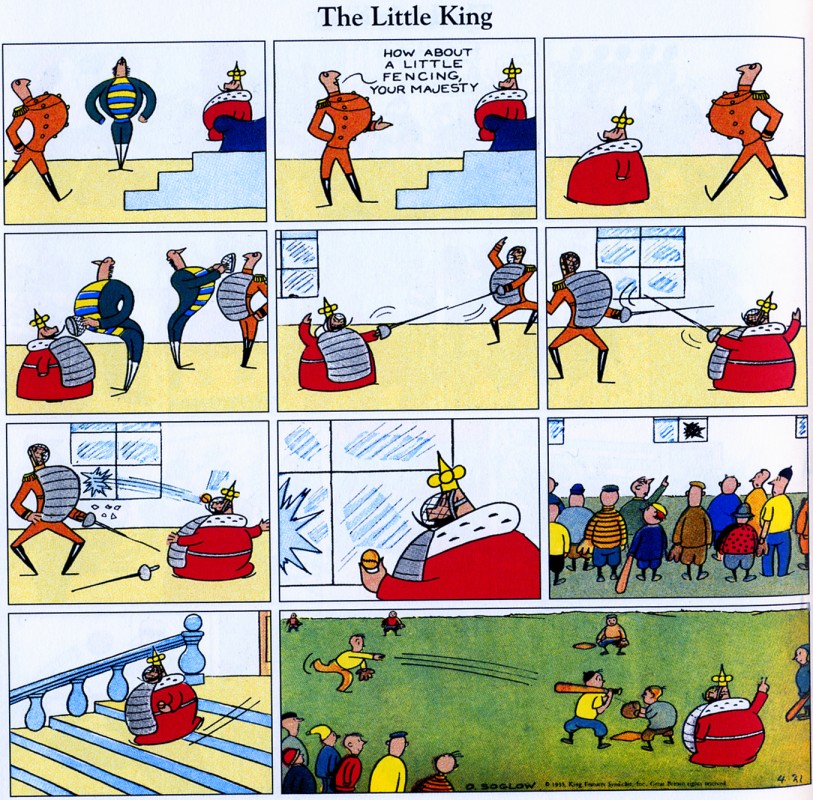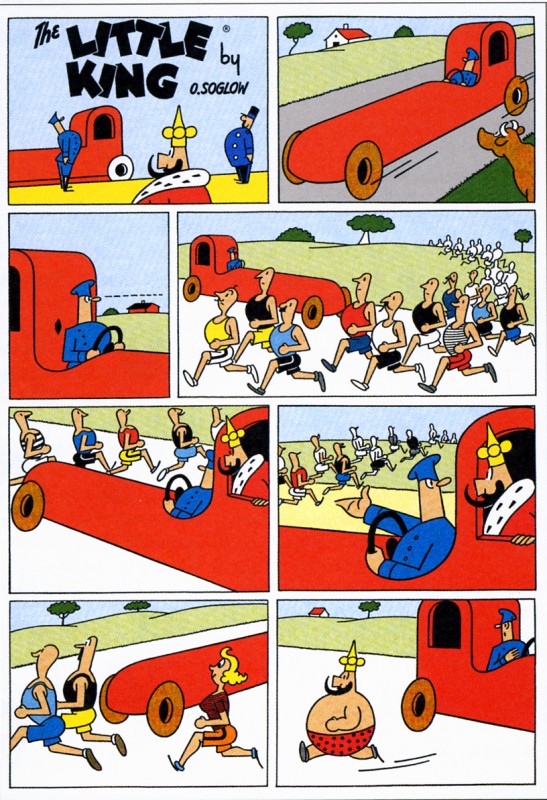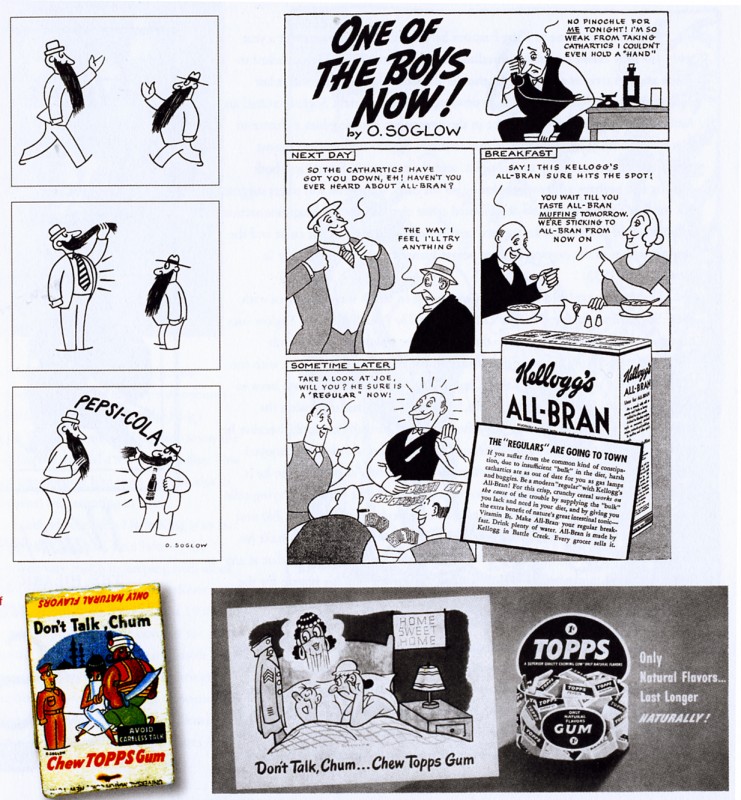This is a review of Cartoon Monarch: Otto Soglow and the Little King
It is edited by Dean Mullaney. This is 432 pages that contain at least that many smiles. It’s 9.5 x 7.7 x 1.6 inches, the right size to read! Some strips are in color, some most in black and white.
The books for $50, I got for $30 on Amazon.
Cartoon Monarch: Otto Soglow and the Little King
First, let’s get to the point: This is just a funny book, go out and read it. I am told it is best read outside, on a hammock, on a nice spring day.
The Little King started out in The New Yorker in 1931. With one year left in his agreement with the publisher, Soglow produced a “clone” for the Sunday papers which distributed by King Features. It was called The Ambassador. The two characters looked and acted very much alike. When his contract with The New Yorker ended, and Soglow could use his original character, The Ambassador was “recalled” and the Sunday series became The Little King. Its pantomime skits are a bit like the movie The Artist: quiet stories in a world of cacophony. Pacing is so important here, the jokes often gently build to a “punch line panel” and often to the reaction after it. It’s just great fun. Oh, there running jokes, the King can’t keep his crown on in the wind and he likes to dress to please people.
In his fine introduction, Jared Gardner describes just how effective and funny these strips can be. He breaks down one, which we have displayed below, and discusses how he, as an art teacher, dissects this for his class.
In his forward, Ivan Brunetti, give a brief but insightful bio of a cartoonist born in Yorkville, New York near the Marx Brothers. Brunetti also traces the origins of the strip, which at its height in the 40s and 50s was read by 25,000,000 people. There are subtle class references throughout the book, but they are just funny and no one is hit over the head with them.
Brunetti elaborates on how the Little King influenced some of the r great comic book artists of the time, including Charles M. Schultz (Peanuts) and Mort Walker (Beetle Bailey) using his minimalistic technique and steady pacing. The more you read The Little King, the more you see how its construction seeped into so many modern strips.
While the book shows a few earlier strips, it mostly has cartoon selections from 1933 through 1977. It also contains wonderful art Soglow produced outside this series. There are marvelous ads he produced for Pepsi Cola, All Bran Cereal and even gasoline. Soglow also created Sentinel Louie, which is also represented here.
Thank God these strips and other like them are popping up and not lost forever. Let me not go on, funny is funny, and this is funny. A+, enjoy yourself.




Very nice review! It’s nice to see this aspect of comic history getting some coverage. The ads remind me of the fact Dr. Seuss also did ads in between his other early stuff. Eisner also got into commercial art, though I believe that was after WWII in his case. I wonder how many comic artists did that in that era.
As I’m the one who recommended the hammock, I want to complement Barry on his review and strongly encourage everybody with an interest in comic strips or an interest in smiling to get a copy! I discovered Soglow through that great big book of New Yorker cartoons that came out a few years back and I’ve been keen on him ever since.
Thanks for recommending the book–and the hammock! What was the title of the book of New Yorker cartoons? That also sounds interesting.
I remember reading the strip as a kid in one of the Sunday newspapers my parents got. Rarely made me laugh out loud, but always brought a smile. It’s nice to see that some of these older strips are being reprinted for a new generation to enjoy and old folks like me to grow nostalgic over.